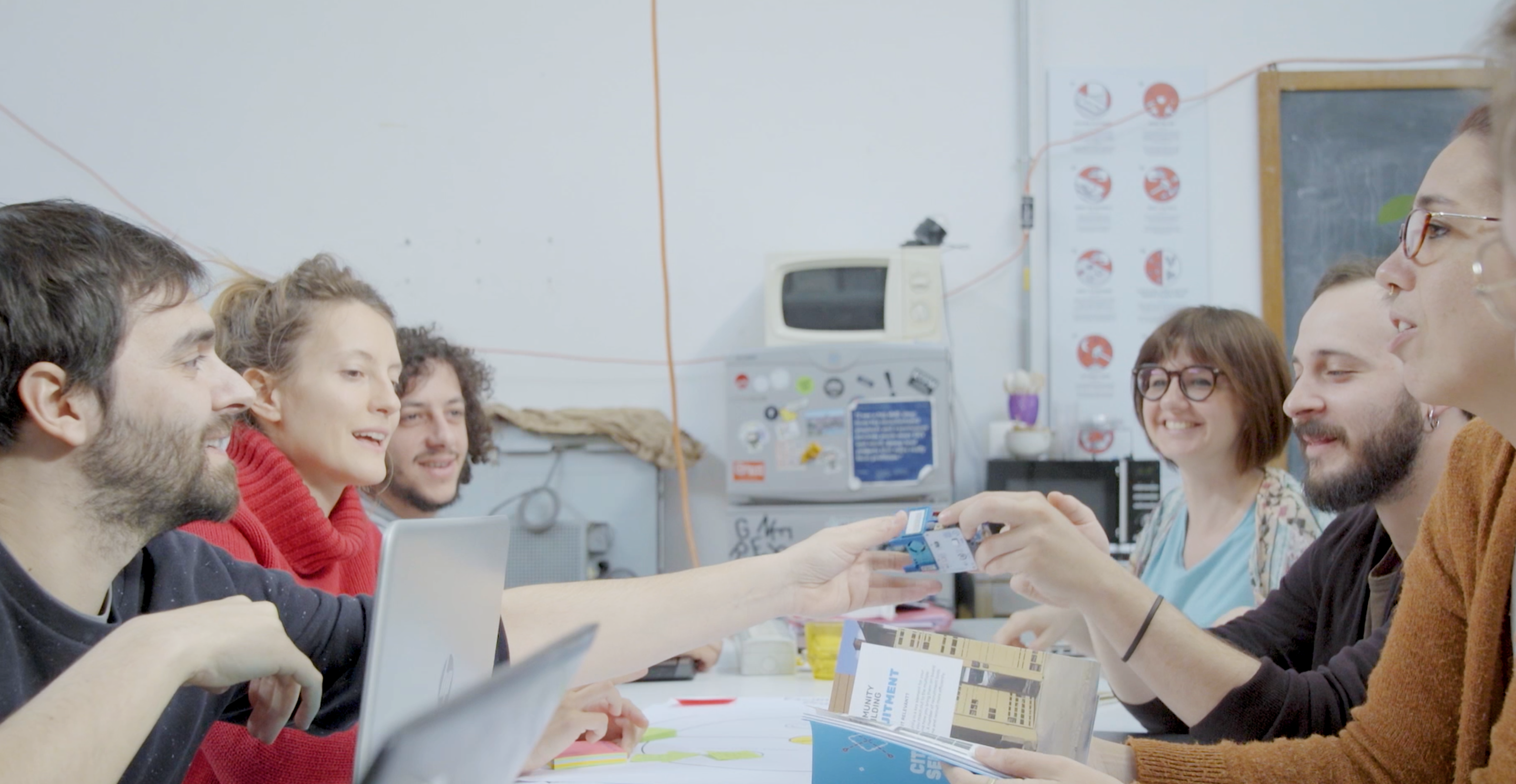Blog
In recent years, humanity’s most significant challenges have caught us unprepared. This has prevented us from reacting in a responsive, efficient and inclusive manner. Being in a globalised and hyper-connected world means that what happens in China affects everyone. Solutions need to be practical and globally adopted on a large scale. The COVID-19 pandemic is not the only recent case in which the most technologically advanced countries have struggled to find a rapid and adequate response. Just think of plastic islands in the oceans, global warming, migration phenomena, the environmental and social impact of agriculture and ocean acidification.
Technology has never been as advanced and accessible as it is now. We read stories of visionary innovators who want to connect the human brain directly to a computer3 or benefactors funding water sanitation projects with billions of dollars. This dynamic results from a Centralised Innovation model, which revolves around the hero-inventor – an extraordinary person capable of solving otherwise impossible problems and changing the course of history by themselves. Conceived around the time of Leonardo Da Vinci — when a few brilliant inventors and artists (financed by enlightened patrons) were responsible for the cultural, artistic and technological innovations that featured in historic and cultural revolutions — Centralised Innovation remains a familiar and prevalent model in present day paradigms, including those of Steve Jobs and Elon Musk. Extraordinary stories, often fictionalised, that are so strong, have forged the archetypal innovation narrative in our heads.
In this model however, little is said about the people, those who experienced change. The “common people” did not play a role and didn’t enter history with their famous contemporaries.
The Centralised Innovation model has endured and strengthened over the last century due to three key aspects:
- It follows the current economic model, and some scholars believe that it might have had a hand in creating it. Thanks to capitalism and economies of scale, an innovative product can spread quickly and produce large profits for creators and investors.
- The hero-innovator is a stereotype that we know, admire and that intrigues us. This makes Centralised Innovation communication more effective, universal and simpler.
- Our role is only that of the “user” or “purchaser”. Our input is simple, momentarily gratifying and deprives us of responsibility.
We face new challenges of a different nature and scale, such as global warming, social injustice, access to education, reducing single-use plastic production, containing the pandemic and gender inequality. All the radical changes we need seem to be beyond individual innovators, innovative start-ups, large corporations and perhaps even individual governments. We need a new approach to innovation. Some phenomena cannot be solved unless we work systemically and include the community. It is naive to think that the invention of a new bioplastic will solve single-use plastics and sea pollution, just as it is naive to hope that the economic system can fairly broker relationships between the players involved. For this reason, Centralised Innovation must be replaced. The current challenges have neither colour nor latitude, they are intersectional and involve everyone. It is urgent to respond to increasingly distributed challenges with “Distributed Innovation”.
Distributed Innovation is a model based on five key factors and can help to address many of the challenges we are struggling to meet today.
Impact
Distributed Innovation stems from the desired impact and the needs of people and the planet. The aim is to respond quickly and field test a potential solution before wondering who might buy it. The purpose is economic sustainability, and not profit maximisation.
People
It is essential to involve people and communities, not just influential and prominent figures. For seemingly utopian solutions to become feasible, it is crucial that many people adopt them and that they do so consciously. Users and communities are not buyers who choose for convenience, but they play an active role in understanding, implementing and disseminating innovation. “Followers”are just as important as “leaders” since they promote change.
Openness
Being open and inclusive maximises the positive impact, because at the heart of Distributed Innovation is the replication of solutions, not the protection of ideas. Ideas must circulate freely if they are to have a global impact. It is not just about sharing designs and code in open-source, but spreading and promoting ideals and methodologies to put them into practice – impact scales by replication, not by growing structures that generate it.
Benefit
If innovation is distributed, the benefit it generates must be too. In addition to new economic models that consider the social impact, systems are needed to track all players’ contribution to redistribute the benefit generated fairly. This allows many to remain an active part of the network and shift the focus from personal gain to a portable contribution.
Network
Innovation is plural and comes from networks rather than from individual innovators. This means that the rules change to maximise the achievableimpact. The management of roles, the charisma of the prominent figures, the allocation of tasks, the openness to suggestions, the integration of proposals are critical steps for developing effective networks in “scaling up widespread innovations by replication.”
This could result in us coming out of it fairer, more equitable and interconnected.

Application of Distributed Innovation.
What are the problems that we are struggling to tackle with current models that can benefit from a distributed approach to innovation?
Firstly, problems that are multiplied by distributed behaviour, for example when an action is independently adopted by many people. This includes challenges that cannot be overcome by introducing a new object or technology if human behaviour is not modified. In many cases, an innovation only addresses the symptoms of a problem rather than its causes. A striking example can be seen in the automotive industry. Since the 1980s, engines have become increasingly efficient, yet pollution from private transport has increased.
The second category of challenges are those that impact many people in different parts of the world, with different cultures, purchasing power, values, etc. In this context, it is challenging to imagine that a Centralised Innovation solution can be quickly adopted to meet such diverse cases. If Distributed Innovation is adaptable and able to be customized to evolve with local communities, it offers an additional lever for solutions to spread and reach more people respectfully and inclusively.
A final category comprises challenges that can only be met by bringing together many players and linking them with extended value chains. Think of the circular economy: the most popular model to date is the transformative model of large companies, i.e. hoping that companies will take care of all the consequences of industrial production and change the production system. This is insufficient. Achieving a radical change in society needs collaborative projects between different scales — multinationals and small local realities, large companies and innovative start-ups, entrepreneurs and students, policymakers and citizens, people belonging to different cultures and generations. Centralised Innovations usually fit into small parts of existing value chains, rarely changing their structure, which is why they are insufficient in lengthy and complex value chains like these.
The Fab Lab and Fab City network unconsciously applies many of these principles. If we were to formalise the process in its entirety and identify its key aspects, it could increase project effectiveness and impact in a form of Distributed Innovation. Let’s think for a moment about the maker-response to the pandemic. The industrial production system failed to react and scale up quickly to the solutions that arose from below. The only practical approach was to produce and design in a distributed and collaborative way. What we saw was an example of Distributed Innovation, using Viral Design as a design process. Distributed Innovation is a way of tackling shared problems on a global scale while acting locally. It requires a network of interconnected realities that can efficiently act locally and exchange solutions, methods and ideas. In this way, all players have an active role and can generate a positive impact. This includes the local community that wants to see a change in its neighbourhood, or the policy-maker in the European Commission who acts on international laws. To date, unfortunately, the tendency is to differentiate rather than to embrace or strengthen an existing movement. Investment is disproportionate and favours creating something novel, rather than replicating something innovative, albeit already up and running elsewhere.
There is still a long way before Distributed Innovation is recognised as an innovation model that is as important and effective as Centralised Innovation. It should be accompanied by necessary transformations, such as reversing the paradigms of communicating innovation and redistributing the economic value it generates. The good news is that the Fab Lab Network has shown that it has spontaneously experimented with Distributed Innovation projects and could provide a new and unexplored key to understanding the challenges facing us. This could result in us coming out of it fairer, more equitable and interconnected.
Written by Enrico Bassi from OpenDot.
This article is part of the book This is Distributed Design. Discover all articles in the digital format of the book!
